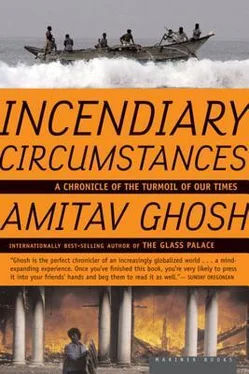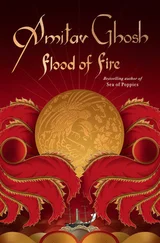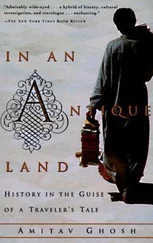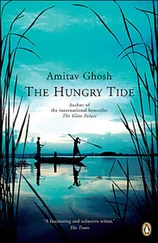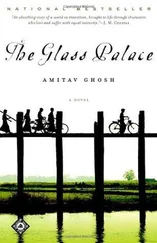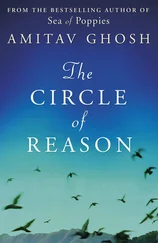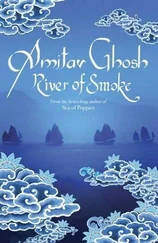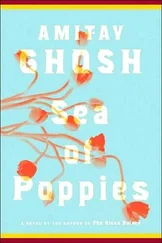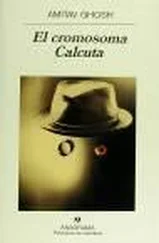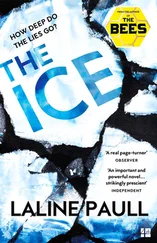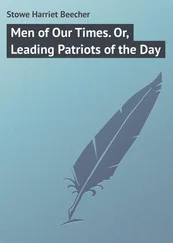When the Burmese offensive was in its second week, I flew to the border town of Mae Hong Son, in northwestern Thailand. It was a clear day, and I watched in awe as the red riverine plains of the south changed into jagged, densely forested mountains, a pristine landscape of misted valleys and towering ridges. I could see no sign of any habitation until Mae Hong Son itself appeared suddenly in my window, a string of teakwood buildings nestled in a deep valley.
At first glance, Mae Hong Son seemed to be a quiet and prosperous frontier town. It was hard to imagine that a war was being fought in the surrounding mountains. I was surprised by the number of hotels on offer. I picked a Holiday Inn. From my room I glimpsed a turquoise swimming pool ringed by European tourists sipping vividly colored drinks in umbrellaed glasses. Within half an hour, my contacts in Mae Hong Son, members of a Burmese student group, sent a guide to take me back across the Burma border into a Karenni-held area that was currently under attack.
We rented a motor scooter and went rattling off down a dirt track that ended at a village near the foot of the mountains. We waded across a stream and started climbing. It was about five in the afternoon, and the sun had already dipped behind a ridge. Following a steeply ascending trail, we stepped from twilight into the darkness of a densely canopied forest. Neither my guide nor I had thought to bring a flashlight; he was wearing rubber sandals and I a pair of thin-soled leather shoes.
I began to regret my precipitate departure from the Holiday Inn. Clawing at the undergrowth to keep from falling, I feared I would end up with a snake in my fist. By the time we stumbled into the students' base camp, hours later, exhaustion had erased every thought from my mind. It was all I could do to stay on my feet.
Half a dozen young guerrillas dressed in camouflage fatigues were squatting around a campfire by a bamboo hut, playing guitars. A heavyset, thickly bearded man detached himself from the group and stepped over to meet me. He introduced himself as the commander of the regiment. He looked me over as I sat panting on a rock. After a moment's hesitation, he asked, a little shyly, "Are you Indian?" I then noticed that his spoken English sounded oddly like my own. I nodded and, through a veil of exhaustion, took another look at him. Suddenly I sat up. "And you?" I asked.
"My parents were Indian," he said with a smile. "But I'm Burmese."
After my ordeal in the jungle, I was not quite prepared for such an eminently postmodern encounter. My astonishment must have been evident in my face, for the commander began to laugh.
He was called Ko Sonny, but his given name, I learned, was Mahinder Singh. He was in his early thirties and had been "in the jungle" almost eight years. His family had been settled in Burma for three generations. His parents were born there; his father was Sikh and his mother Hindu, both from families of well-to-do Indian businessmen.
I was disconcerted listening to Sonny in the flickering firelight. I was sure that our relatives had known one another once in Burma; his had chosen to stay and mine hadn't. Except for a few years and a couple of turns of fate, each of us could have been in the other's place.
I spent the night on a bamboo pallet in Sonny's hut. The next day I was jolted awake before dawn by the sound of a Burmese Army artillery barrage. After groping for a match, I stepped outside to find Sonny talking into a walkie-talkie. The Burmese Army had launched an assault on a Karenni position in an adjoining valley.
The fighting was a good distance away, but the sound of gunfire came rolling up the misted mountainside with uncanny clarity, the rattle of small-arms fire clearly audible in the lulls between exploding artillery shells. The noise sent flocks of parakeets shooting out of the mountainside's tangled canopy.
With daybreak I had my first look at the camp — a string of thatched bamboo huts arranged along a mountain stream. A great deal of thought had gone into the camp's planning. The plumbing was far from rudimentary: water was piped directly into bathrooms and showers from the stream. There was a dammed pond teeming with fish and, nearby, a pen full of pigs.
Next to each hut was a vegetable patch. Once Sonny had ascertained that the fighting was not headed our way, he picked up a watering can and waded into a patch of bok choy. Following his lead, the others put aside their battle gear and disappeared into their pumpkin trellises and mustard beds like a troop of Sunday gardeners.
"Growing food is as important to our survival as fighting," Ko Sonny explained apologetically. "We do this before we go on patrol."
We set out an hour or so later, a detachment of half a dozen student fighters, with Sonny in the lead. Once we had crossed the border, an unmarked forest trail, Sonny and his men reclaimed a cache of aging M-16s and slung them over their shoulders.
We climbed onto a ridge, where I found myself gazing at a majestic spectacle of forested gorges, mountain peaks, and a sky of crisp, pellucid blue. The shelling was sporadic now: occasionally the forest canopy would silently sprout a mushroom cloud of smoke, the accompanying blast climbing leisurely up the slope moments later.
Mae Hong Son was clearly visible, a smudge in the floor of a tip-tilted valley. While Sonny counted off the caliber of the exploding shells—120mm, 81mm — I turned his binoculars on the town and spotted my hotel.
Sonny pointed to the Karenni post we were to visit. It was called Naung Lon and was built around a peak that reared high above the surrounding spurs and ridges. We entered through a gate hidden in a wall of bamboo stakes. After crossing a moat and a barbed-wire barrier, we made our way cautiously past a ring of heavily sandbagged gun emplacements and were met by a Karenni officer, a tall, stooped man with melancholy eyes and an air of regretful doggedness. The officer and his men, like most Karenni insurgents, were devout Christians. The officer himself happened to be a Baptist. His eyes flickered constantly as we spoke. His arm describing a semicircle, he pointed to the Burmese Army positions on the mountaintops around us. The Burmese Army had concentrated ten thousand men in the area, he explained. The Karenni army had a force of about six hundred. He knew that he was defending a hopeless position and had already made plans to evacuate.
Later, on the way back to the student camp, I remarked to Sonny that I didn't see how the Karenni army could possibly escape defeat.
Sonny laughed. The Karenni, he pointed out, had been fighting against dire odds for fifty years. Many regarded the war against SLORC as a direct continuation of the war against the Japanese. Some Karenni families had been at war for three generations, and many of their fighters had spent their entire lives in refugee camps.
What does it take, I found myself wondering, to sustain an insurgency for fifty years, to go on fighting a war that the rest of the world has almost forgotten? What did freedom mean to the Karenni — democracy or simply the right to set up an ethnic enclave of their own?
The next day I returned to Mae Hong Son and went to see Mr. Abel Tweed, the foreign minister of the Karenni National Progressive Party, in his small back-alley office. A voluble square-jawed man, Mr. Tweed delved into a makeshift archive housed in a cupboard. "We have always been independent," he announced, "and we have the documents to prove it."
Leafing through the papers he handed me, I saw that he was right: the British had clearly recognized Karenni autonomy in the late nineteenth century and had rejected the option of annexing the Karenni territories to Burma proper. Their reasons were not altruistic. "It is evident that the country is perfectly worthless in itself," one British administrator wrote of the Karenni area. "It is almost impracticable, for even an elephant."
Читать дальше
